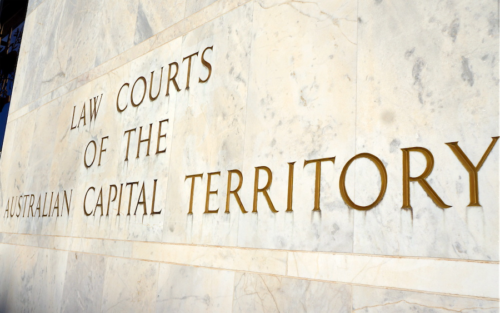Letter writer ROSS KELLY, of Monash, needed cost-effective help for his sick cat, but discovered that veterinary clinics are overwhelmingly commercial and targeted squarely at the deeply middle class.

I WAS quite shocked to read the excellent story by Danielle Nohra dealing with the frequency of suicides and attempted suicides among veterinarians; and seemingly to some extent their allied veterinary assistant staff (CN, November 18).
Part of this is understandable in terms of the predicaments and suffering they witness, and the suffering they “end” on a regular basis.
I am very fond of animals and, as much as I love them, I don’t have the psychological mental toughness to be a vet.
Indeed, I have often wondered about people entering the profession on these grounds; that they both apparently empathise with our furry friends and yet have to deal daily with some pretty terrible scenarios.
The positioning and delivery of veterinary services is also a problem, I suspect, that may be feeding into veterinary dissatisfaction.
My own awakening to this was when Charlie, my loyal sidekick moggy, suffered asthmatic breathing difficulties at a time when I was in financial difficulties.
A rapid dose of the realities of the veterinary business model soon followed when I enquired around the city about options for an urgent issue where there might be a challenge with full fees. Time and again my phone calls were dismissed as I was told there was really nothing available for such cases. Poor Charlie!
It became clear that veterinary services – and indeed the dominant business model – is overwhelmingly commercial and targeted squarely at the deeply middle class. Indeed one vet – a man I admire for both his skills and honesty – suggested that I might reflect in future on whether I can afford to own a pet.
Companion animals are hugely central to the quality of life of many on the fringes of society, and indeed the working poor. And I suggest there is a mismatch between the broad, democratic base of pet ownership versus the veterinary business model in Australia.
One can imagine the distress of a disadvantaged pet owner realising they simply can’t help their suffering little friend because there really are no options for the poor other than to surrender their companion to the RSPCA for either destruction or rehoming to the middle class.
Charlie ultimately succumbed to a sudden illness, which ran up a bill of thousands of dollars in a matter of days. While by that time I was able to stump up more than my last car cost, it further drove home the stress and worry that some consumers may be wrestling with when seeking veterinary services – and which may lead to tension and harsh exchanges.
My brush with the eye-widening costs of veterinary services is hard to reconcile with the puzzling contention of Dr Warwick Vale, the national president of the Australian Veterinary Association, that vets are “often the lowest income earners in the community”.
Really? It sounds like Dr Vale has had little contact with the cleaners, shop assistants and pensioners who know they have no place being in the waiting room of an Australian vet.
We could also point to dentists as having a “problem with the poor” in today’s hyper-professionalised market of expert services. But, rather than just point to a problem, I will suggest that there are, in fact, steps veterinarians could take to address the concerns and distress of vulnerable and disadvantaged owners of companion animals; and in so doing, “democratise” veterinary services just a little.
A national initiative that will help the battlers of society and somewhat correct the exclusivity of vet services, as well as better knit vets into the fabric of their community, would be just a few days every month where government pensioners and holders of low-income health cards can have a basic veterinary consultation for, say, $50 plus any medication. I would hope that the outcome would be a heightened level of job satisfaction, and I would bet on fulsome gratitude from people who currently see vets as a service by, and for, the middle class.
Ross Kelly, Monash
Why the ‘Y’ wasn’t Walter’s plan
BILL Ginn repeatedly invokes “Walter Burley Griffin’s ‘Y’ plan” in his call for a new development corridor from the ACT towards Yass (“Standing up to the government ‘bully’ next door”, CN December 2).
The “Y” plan had nothing to do with Griffin. It was formulated by the National Capital Development Commission as part of the “new towns” policies for population growth and transport planning in 1969.
Scott Humphries, Curtin
Wondering where Gordon had gone
I’D been wondering where failed Ginninderra MLA Gordon Ramsay had got to (“Seven Days”, CN November 25).
Last reports were that Andrew Barr had given him a well-paid, taxpayer-funded job in the Chief Minister’s office. I had thought perhaps Mr Ramsay had then returned to his previous calling in the Uniting Church, ministering to the poor and disadvantaged in our community.
However, it seems the allure of yet another, no doubt costly, taxpayer-funded job was just too tempting even for this former pastor as he has now scored the CEO role of the Cultural Facilities Corporation.
You have to wonder about the quality of the other 20 applicants for the position given the successful applicant has no apparent qualifications or experience in the arts sector.
Was Mr Ramsay’s appointment a shining example of merit selection or yet another example of Labor’s jobs for the boys? Only time will tell.
Anthony Noakes, Florey
Beware the push for digital water meters
I HAVE recently completed a survey on behalf of Icon Water as part of its future planning. Icon Water is proposing to “upgrade” the current mechanical water meters to digital meters, in essence some kind of smart meter transmitting water use several times a day to Icon Water.
Mechanical meters are disparaged in the survey, for example in relation to picking up water leaks. However, this is very easy to do with mechanical meters by turning off all running water, and observing if there is any movement on the meter dial.
With digital meters, there is much hype about real-time information to consumers, most of whom have better things to do than contemplating their water use on more than a quarterly basis.
There are the environmental costs of batteries in meters, and the energy costs of processing all the data electronically. There is also the question of malfunction in the proposed new meters, the reliability of their energy source and many other potential failure points in the proposed new complex system.
It seems to be about moving on people who read meters and advantaging Icon Water, rather than consumers per se.
Overcharging, time of use charging and the health implications of radiofrequency emissions have all been raised in relation to electricity smart meters.
Some US states have legislative activity currently on the harms of smart meters, driven particularly by concerned communities.
My recommendation is to read the Icon Water survey critically, and to be careful of what you wish for. The hype is concealing many unanswered questions.
Murray May, Cook
The ‘generosity’ of government housing
HOW many properties should be given to any family by the ACT government? This may seem a strange question but it isn’t.
I know a family of three adults who have already been given four properties and two of the adults have recently applied for two more properties.
They were told they will get them next year, which will take the total number of properties given to that family to six.
I had no idea how generous the ACT taxpayer was. I also know the waiting time for getting government housing in the ACT is much shorter than NSW, which makes us a soft target for those wanting what amounts to a free house.
The fact that a family of three people, all adults, can get as many as six houses leads me to the conclusion that the 11,600 properties owned by the ACT government are mismanaged.
At the same time these six properties have been given to this family there are still homeless people on Canberra’s streets. In fact, last Thursday I passed a homeless woman settling down for the night in front of a shop in East Row.
It seems to me that some needy people in the ACT are more equal than others.
Lucinda Spier, Campbell
A thank you for bike kindness
ON the afternoon of Thursday, November 25, my bicycle fell off my car bike-rack on Flemington Road, near Nullarbor Avenue, Harrison.
Through your pages, I would like to acknowledge and thank the very kind person who picked up my bike off the road and chained it to a post, outside Harrison Green apartments, until I could get back to retrieve it.
I am extremely grateful to have my bike back, still in excellent condition, and also delighted that such community spirit still exists in Canberra.
Neil Byron, Lyneham
Hats off to centre management!
COOLEMAN Court Shopping Centre takes pride in its facilities. With reference to a previous CN topic, the toilets located on the ground and first floors are cleaned regularly and well-maintained. They are pleasant to visit.
The recycling bins for thin plastic recycling and battery recycling at Woolworths; the battery recycling at Aldi; the e-waste recycling, bottles, cardboard and cans recycling; and the community non-perishable food donation box – all located near the lifts and baby/child room – are extremely handy and very supportive of keeping our environment clean and free from pollution.
An associate of mine has told me that there is nothing like this in her local shops at Belconnen West. Having been to other shopping centres, I am able to say that I am proud to visit, shop and recycle at Cooleman Court, my local shopping centre; the best shopping centre in Canberra! Hats off to centre management!
Jenny Holmes, Weston
Cycling tracks ‘highly valued’
RE letter writer Max Flint’s criticism of our city’s “expensive useless bike tracks” (CN November 18), the cycling infrastructure provided to us in Canberra is highly valued by my wife and myself.
It allows us to maintain healthy exercise activities and to integrate them with commuting to work on a regular basis, which is beneficial.
We pay our taxes and we want safe cycling infrastructure to be a significant part of our recreational and occupational transport mix.
Ron Kelly, Watson
Morrison doesn’t want an ICAC
COLUMNIST Michael Moore asks “Why is the PM dodging the corruption promise?” (Politics, CN December 2). In my opinion, the Morrison government’s response to calls for a federal Independent Commission Against Corruption (ICAC) is all about self-preservation and winning the looming election.
PM Morrison is desperate to keep his government’s rorts, such as the sports grants and commuter car parks schemes, both of which were heavily biased to electorates held by the Coalition, held by narrow margins, or on the Coalition’s “capture from Labor” wish list, as well as the Western Sydney Airport land “rip-off”, under wraps.
Mr Morrison does not want a federal ICAC under any circumstances.
Dr Douglas Mackenzie, Deakin
Wars are fought by junior officers
MY grandfather was awarded the Military Medal as a corporal on the Western Front during World War I, then commissioned as a lieutenant. As such, he notably retrieved the buried body of a slain British officer and sent his personal effects to the family, along with essential confirmation of death. He did not have to do so, but humanity impelled.
Hence, I am in hearty agreement with Paul Varsanyi (Letters, CN November 25). Wars are fought by junior officers (lieutenants and captains), NCOs and other ranks. Some senior officers spend very little time in the field of combat.
Both the recitation of “The Ode” and the formal address of Remembrance Day should be by the junior combatants. The service should not be primarily a display of ADF drill and music.
The ADF is only an incidental, small component of the purpose of the day. As is wreath laying by politicians and diplomats.
Wreaths by service organisations (RSL, Legacy, etcetera) should be unlimited.
Yours in reverence of the day.
Christopher Ryan, Watson
The next task for managing emissions
THE commissioner for Sustainability and the Environment reports that in 2018 the average Canberran caused greenhouse emissions equivalent to 35 tonnes of carbon dioxide. That compares with less than 25 tonnes in each of the six states.
The ACT’s landfill emissions amount to 180kg CO2-e per capita. City Services Minister Chris Steel has announced a trial of a scheme that “can help reduce the amount of emissions that are coming off our landfill by up to 30 per cent”.
Canberra’s next task will be to work out how to reduce the other 99 per cent of our emissions.
Leon Arundell, Downer
Photo shoots don’t cut it
I AGREE with Carol Carlyon (Letters, CN November 25).
A senator who doesn’t vote for the interests of his/her state or territory has no right to be in the Senate chamber.
Either Mr Seselja needs to study carefully what a senator’s role is, or
be replaced by someone who does!
Relying on photo shoots with the PM doesn’t cut it for me.
Barry Salisbury, Ngunnawal
Why listen to ‘prophets of doom’?
IN his appeal to listen to the “prophets of doom” (Letters, CN November 25), does Gavin O’Brien speak for or simply support Climate Watch? This institution, as one of myriad climate-change promoters, is not about to say anything to detract from the panic being sown, nor to detract from the computer simulations on which virtually all of the climate-change predictions by the IPCC are based and blindly followed by believers.
Indeed, the simulations are complex and need the most powerful computers on which to be run, but that does not necessarily mean that they produce valid results.
After all, computer simulations, no matter how sophisticated, have important limitations, as those like myself, who have performed such simulations, are well aware.
To boot, climate scientists are attempting to model the most complicated of all systems known to man, ie, our naturally chaotic (in the physical sense of the word) atmosphere all around the globe, through all seasons and 80 years or so into the future.
A lot has to go right for the truth to be known, if at all possible.
Climate-change promoters are never going to publish results that do not support their case of global warming and climate change. Such a pity!
Max Flint, via email
Who can be trusted?
In a world of spin and confusion, there’s never been a more important time to support independent journalism in Canberra.
If you trust our work online and want to enforce the power of independent voices, I invite you to make a small contribution.
Every dollar of support is invested back into our journalism to help keep citynews.com.au strong and free.
Thank you,
Ian Meikle, editor





Leave a Reply